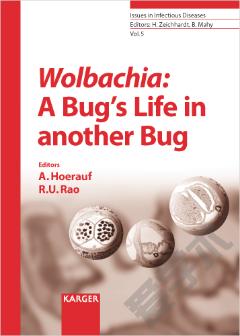Wolbachia: A Bug's Life in another Bug
Wolbachia are Gram-negative bacteria that form intracellular inherited infections in many invertebrates. They are extremely common, with 20-75% of all insects being infected. Moreover, they infect numerous noninsect invertebrates including nematodes, mites and spiders. Approximately 120 million people are infected by filarial nematode parasites worldwide. Transmitted to humans through mosquitoes and black flies, the majority of the disease-causing nematodes are hosts to the Wolbachia bacteria. These nematodes cause the often devastating diseases elephantiasis and onchocerciasis, commonly referred to as filariasis. Moreover, heartworm disease, caused by another Wolbachia-containing nematode, is another mosquito-borne disease that has significant importance in the veterinary field. Featuring the findings of internationally recognized experts in infectious disease research and insect biology, this publication highlights their perspectives on Wolbachia’s genome, evolution, symbiosis, biology, pathogenicity as well as its potential as a drug target. This comprehensive publication is intended for readers with teaching or research interests in microbiology, entomology, infectious diseases, genetics, tropical medicine and clinical research.
{{comment.content}}








 京公网安备 11010802027623号
京公网安备 11010802027623号